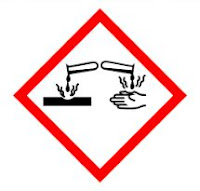As you may recall from the blog post "What's in a Name? How Chemicals Get Their Names," the name dihydrogen monoxide means that in a molecule of this chemical there are two hydrogens for every one oxygen. This should have indicated to these students that dihydrogen monoxide is H2O, or a chemical name for water (which most certainly should not be banned). One can only imagine that it was with great horror that his classmates watched the student win the state science fair that year with his project "How Gullible Are We?" (the answer to which is apparently 86%).
All of this is to say that you're probably willing to take a scientist's word for it that water is in fact two parts hydrogen to every one part oxygen. But why should you when a simple experiment can help you measure the amounts of each gas produced when the two elements are separated into their respective ions?
To separate the elements into hydrogen ions and oxygen ions, take a beaker (a plastic cup will do) of water, and add a pinch of Epsom salt. Next, place a 9 volt battery into the bottom of the beaker, with the prongs pointing upwards. Fill two clear test tubes with the same water-Epsom salt solution, and carefully invert them in the cup so that they remain filled. Place each one over one prong of the battery.
As time passes, the liquid will be displaced in each test tube with a gas, but not in equal amounts. The test tube over the negative side will have twice as much gas in it as the test tube over the positive side.
This is because hydrogen ions are positive and so are formed on the negative prong, while oxygen ions are negative and so are formed on the positive prong. Since there are twice as many hydrogens as oxygens in each water molecule, there is twice as much hydrogen gas formed as oxygen gas.
Congratulations super-scientist! You've just performed electrolysis on the dangerous chemical dihydrogen monoxide!



No comments:
Post a Comment